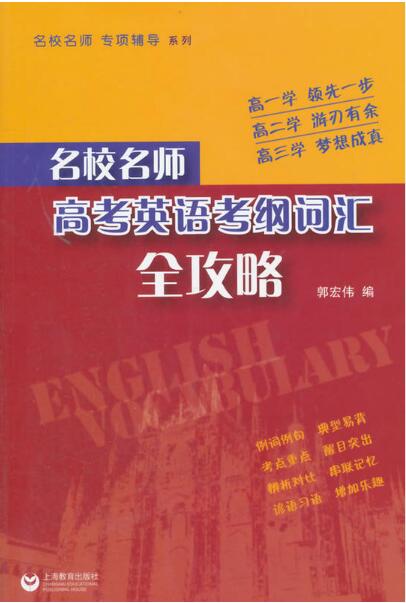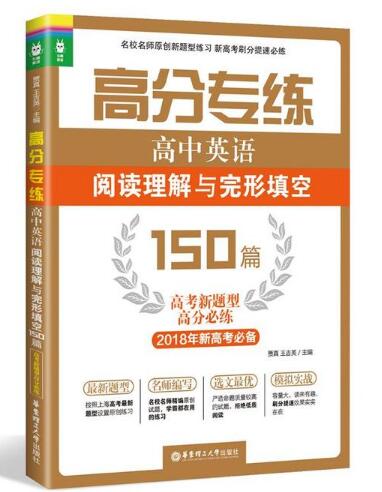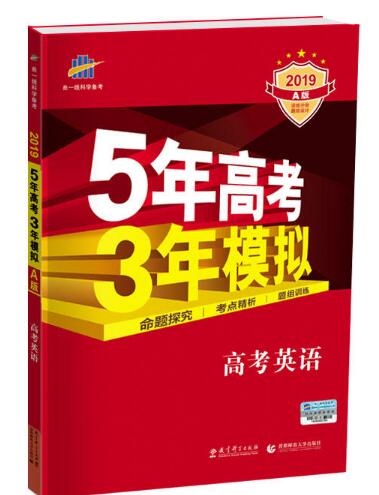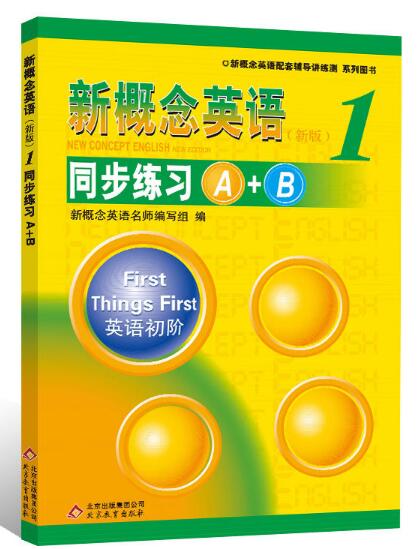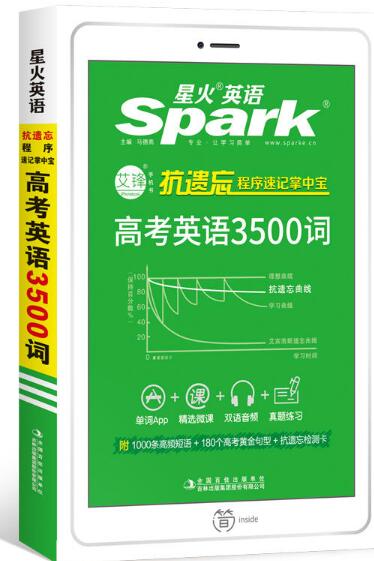ЎЎЎЎФЪУўХZ(yЁі)өДҫдЧУЦР����Ј¬Ц^ХZ(yЁі)„У(dЁ°ng)Ф~өДРОКҪ‘Ә(yЁ©ng)ЕcЦчХZ(yЁі)өДИЛ·QәН”ө(shЁҙ)ұЈіЦТ»ЦВЎЈИзәОЕР¶Ё�����Ј¬„tТӘҝҙҫдЧУөДТвЛј�����ЎЈ¶а”ө(shЁҙ)ЗйӣrПВ��Ј¬ёщ“ю(jЁҙ)ҫдЧУөДЦчХZ(yЁі)РОКҪҫНДЬЕР¶Ё����Ј¬ө«УРөД„tТӘҝҙХыҫдөДТвЛјЈ¬ј°ҸҠ(qiЁўng)Х{(diЁӨo)өДғИ(nЁЁi)ИЭ�ЎЈПВГжОТӮғҫНіЈУГөДЎўТЧ»мөДҺЧ·NЗйӣrЧчТ»ПВҪвбҢ����ЎЈ
ЎЎЎЎ1ЎўТФҶО”ө(shЁҙ)ГыФ~»тҙъФ~���ЎўІ»¶ЁКҪ�����Ўў„У(dЁ°ng)ГыФ~¶МХZ(yЁі)»тҸДҫдЧчЦчХZ(yЁі)•r(shЁӘ)����Ј¬Ц^ХZ(yЁі)„У(dЁ°ng)Ф~ТӘУГҶО”ө(shЁҙ)РОКҪ��ЎЈИзЈә 1)The book is on the table.
ЎЎЎЎ2) He is reading English.
ЎЎЎЎ3) To work hard is necessary.(It is necessary to work hard.) 4)How you get there is a problem.
ЎЎЎЎ2�ЎўҸН(fЁҙ)”ө(shЁҙ)ЦчХZ(yЁі)ёъҸН(fЁҙ)”ө(shЁҙ)„У(dЁ°ng)Ф~ЎЈИзЈә Children like to play toys.
ЎЎЎЎ3ЎўФЪө№СbҫдЦР�Ј¬„У(dЁ°ng)Ф~өД”ө(shЁҙ)‘Ә(yЁ©ng)әНЛьәуГжөДЦчХZ(yЁі)өД”ө(shЁҙ)Т»ЦВЎЈИзТФ here,there й_(kЁЎi)о^����Ј¬be „У(dЁ°ng)Ф~ЕcәуГжөЪТ»ӮҖ(gЁЁ)ГыФ~Т»ЦВЎЈИзЈә
ЎЎЎЎ1) There is a dog near the door.
ЎЎЎЎ2) There were no schools in this area before liberation. 3)Here comes the bus.
ЎЎЎЎ4)On the wall were two famous paintings. 5)Here is Mr Brown and his children.
ЎЎЎЎ4��Ўўand ЯBҪУғЙӮҖ(gЁЁ)»тғЙӮҖ(gЁЁ)ТФЙПөДІўБРЦчХZ(yЁі)•r(shЁӘ)���Ј¬Ц^ХZ(yЁі)„У(dЁ°ng)Ф~УГҸН(fЁҙ)”ө(shЁҙ)����ЎЈИз№ыЦчХZ(yЁі)әуёъУР with, together with, except, but, perhaps , like, including, as well as, no less than, more than, rather than өИТэЖрөД¶МХZ(yЁі)���Ј¬Ц^ХZ(yЁі)„У(dЁ°ng)Ф~ИФЕc¶МХZ(yЁі)З°өДЦчХZ(yЁі)өДРОКҪұЈіЦТ»ЦВ�ЎЈИзЈә
ЎЎЎЎ1) Jane, Mary and I are good friends.
ЎЎЎЎ2) He and my father work in the same factory. 3)His sister, no less than you, is wrong.
ЎЎЎЎ4)The father, rather than the brothers, is responsible for the accident. 5)He, like you and Xiao Liu is very diligent.
ЎЎЎЎ6) Every picture except these two has been sold.
ЎЎЎЎ7) Alice with her parents often goes to the park on Sundays. 8)Alice as well as her friends was invited to the concert.
ЎЎЎЎ9)Nobody but Mary and I was in the classroom at that time.
ЎЎЎЎ5����ЎўІўБРЦчХZ(yЁі)Из№ыЦёөДКЗН¬Т»ӮҖ(gЁЁ)ИЛЎўН¬Т»КВОп»тН¬Т»ёЕДо•r(shЁӘ)��Ј¬Ц^ХZ(yЁі)„У(dЁ°ng)Ф~УГҶО”ө(shЁҙ)��Ј¬and әуГжөДГыФ~ӣ](mЁҰi)УР№ЪФ~�����ЎЈИзЈә
ЎЎЎЎ1) The writer and worker is coming to our school tomorrow.
ЎЎЎЎЯ@О»№ӨИЛЧчјТГчМмТӘҒн(lЁўi)ОТӮғҢW(xuЁҰ)РЈ�����ЎЈ
ЎЎЎЎ2) Bread and butter is their daily food.
ЎЎЎЎГж°ьәНьSУНКЗЛыӮғГҝИХөДКіЖ·�ЎЈ
ЎЎЎЎ3) The writer and the worker are coming to our school tomorrow.
ЎЎЎЎДЗО»ЧчјТәНДЗО»№ӨИЛГчМмҢўҒн(lЁўi)ОТӮғҢW(xuЁҰ)РЈЎЈ(ғЙӮҖ(gЁЁ)ИЛ)
ЎЎЎЎ6��Ўўand ЯBҪУөДІўБРҶО”ө(shЁҙ)ГыФ~З°ИзУР each, every, no, many a РЮп—•r(shЁӘ)�Ј¬Ц^ХZ(yЁі)„У(dЁ°ng)Ф~ТӘУГҶО”ө(shЁҙ)РОКҪЎЈИзЈә
ЎЎЎЎ1) Every boy and girl has been invited to the party.
ЎЎЎЎЛщУРөДәўЧУ¶јұ»СыХҲ(qЁ«ng)…ўјУЯ@ҙОҫЫ•ю(huЁ¬)�����ЎЈ
ЎЎЎЎ2) No teacher and no student is absent today.
ЎЎЎЎҪсМмӣ](mЁҰi)УРАПҺҹәНҢW(xuЁҰ)ЙъИұПҜ�ЎЈ
ЎЎЎЎ3) Many a student is busy with their lessons.
ЎЎЎЎФSФS¶а¶аөДҢW(xuЁҰ)Йъ¶јГҰЦшҸН(fЁҙ)Б•(xЁӘ)ЛыӮғөД№ҰХnЎЈ
ЎЎЎЎ7����Ўўeach, either, one, another, the other, neither ЧчЦчХZ(yЁі)•r(shЁӘ)Ј¬Ц^ХZ(yЁі)„У(dЁ°ng)Ф~УГҶО”ө(shЁҙ)РОКҪ����ЎЈИзЈә 1)Each takes a cup of tea.
ЎЎЎЎ2) Either is correct.
ЎЎЎЎ3) Neither of them likes this picture.
ЎЎЎЎ8�����ЎўУЙevery, some, any, no ҳӢ(gЁ°u)іЙөДәПіЙҙъФ~ЧчЦчХZ(yЁі)•r(shЁӘ)�����Ј¬Ц^ХZ(yЁі)„У(dЁ°ng)Ф~УГҶО”ө(shЁҙ)РОКҪ����ЎЈИзЈә
ЎЎЎЎ1) Is everyone here?
ЎЎЎЎ2) Nothing is to be done. ӣ](mЁҰi)УРКІГҙТӘёЙөДКВғәБЛ�����ЎЈ
ЎЎЎЎ9���ЎўкP(guЁЎn)ПөҙъФ~ who, that, which өИФЪ¶ЁХZ(yЁі)ҸДҫдЦРЧчЦчХZ(yЁі)•r(shЁӘ)��Ј¬ЖдЦ^ХZ(yЁі)„У(dЁ°ng)Ф~өД”ө(shЁҙ)‘Ә(yЁ©ng)ЕcҫдЦРПИРРФ~өД”ө(shЁҙ)Т»ЦВ���ЎЈИзЈә
ЎЎЎЎ1)Those who want to go please sign their names here. 2)Anyone who is against this opinion may speak out. 3)He is one of the students who were praised at the meeting.
ЎЎЎЎ10ЎўұнКҫ•r(shЁӘ)йg����Ўўҫалx���Ўўғr(jiЁӨ)ёсЎў¶ИБҝәвөИөДҸН(fЁҙ)”ө(shЁҙ)ГыФ~»т¶МХZ(yЁі)ЧчһйТ»ӮҖ(gЁЁ)Хыуwҝҙҙэ•r(shЁӘ)�����Ј¬ЖдЦ^ХZ(yЁі)„У(dЁ°ng)Ф~іЈУГҶО”ө(shЁҙ)РОКҪ��ЎЈИзЈә
ЎЎЎЎ1)Three years is not a long time. 2)Ten dollars is what he needs.
ЎЎЎЎ3)Five hundred miles is a long distance.
ЎЎЎЎ11��ЎўҸН(fЁҙ)”ө(shЁҙ)РОКҪөДҢЈУРГыФ~ЧчһйХыуwҝҙҙэ(ИзИЛГы��ЎўөШьc(diЁЈn)�ЎўҮш(guЁ®)јТ�����ЎўҪMҝ—�Ўў•шј®ЎўҲу(bЁӨo)ҝҜөИ)�Ј¬„У(dЁ°ng)Ф~УГҶО”ө(shЁҙ)РОКҪЎЈИзЈә
ЎЎЎЎ1) The United States is in North America.
ЎЎЎЎ2) The United Nations has passed a resolution(ӣQЧh)��ЎЈ3)Ў°The Arabian NightsЎұ(Ў¶Мм·ҪТ№ЧTЎ·)is an interesting book.
ЎЎЎЎ12ЎўУРР©јҜуwГыФ~Из family, team, group, class, audience(В (tЁ©ng)ұҠ����Ј¬У^ұҠ)Ј¬government өИЧчЦчХZ(yЁі)•r(shЁӘ)�Ј¬ИзҝҙЧчКЗТ»ӮҖ(gЁЁ)ХыуwЈ¬Ц^ХZ(yЁі)„У(dЁ°ng)Ф~„tУГҶО”ө(shЁҙ)РОКҪ;ИзҸҠ(qiЁўng)Х{(diЁӨo)ёчӮҖ(gЁЁ)іЙҶT•r(shЁӘ)����Ј¬Ц^ХZ(yЁі)„У(dЁ°ng)Ф~ТӘУГҸН(fЁҙ)”ө(shЁҙ)РОКҪЎЈИзЈә
ЎЎЎЎ1) My family is going to have a long journey.
ЎЎЎЎОТјТТӘЯM(jЁ¬n)РРТ»ҙОйL(zhЁЈng)НҫВГРР�����ЎЈ
ЎЎЎЎ2) My family are fond of music.
ЎЎЎЎОТјТИЛ¶јПІҡgТфҳ·(lЁЁ)���ЎЈ
ЎЎЎЎ3) The class has won the honour.
ЎЎЎЎЯ@°а«@өГБЛҳsЧu(yЁҙ)����ЎЈ
ЎЎЎЎ4) The class were jumping for joy.
ЎЎЎЎИ«°аН¬ҢW(xuЁҰ)¶јёЯЕdөГМшБЛЖрҒн(lЁўi)����ЎЈ
ЎЎЎЎ13Ўўall, more, most, some, any, none, half, the rest өИЧчЦчХZ(yЁі)•r(shЁӘ)����Ј¬јИҝЙұнКҫҸН(fЁҙ)”ө(shЁҙ)ТвБx�Ј¬ТІҝЙұнКҫҶО”ө(shЁҙ)ТвБx�Ј¬Ц^ХZ(yЁі)„У(dЁ°ng)Ф~ТӘёщ“ю(jЁҙ)ҢҚ(shЁӘ)лHЗйӣr¶ш¶ЁЎЈИзЈә
ЎЎЎЎ1) All of the apple is rotten. ХыӮҖ(gЁЁ)МO№ы¶ј ҖБЛ�����ЎЈ
ЎЎЎЎ2) All of the apples are rotten. ЛщУРөДМO№ы¶ј ҖБЛ�����ЎЈ
ЎЎЎЎ3) Most of the wood was used to make furniture (јТҫЯ)����ЎЈ
ЎЎЎЎ14��Ўўthe + РОИЭФ~(»т·ЦФ~)ЧчЦчХZ(yЁі)•r(shЁӘ)�Ј¬іЈЦёТ»оҗИЛЈ¬Ц^ХZ(yЁі)„У(dЁ°ng)Ф~УГҸН(fЁҙ)”ө(shЁҙ)РОКҪ�ЎЈИзЦёөДКЗійПуёЕДоЈ¬Ц^ХZ(yЁі)„У(dЁ°ng)Ф~„tУГҶО”ө(shЁҙ)РОКҪ�ЎЈИзЈә
ЎЎЎЎ1) The young are usually very active. ДкЭpИЛНЁіЈКЗәЬ»оЬSөДЎЈ
ЎЎЎЎ2) The wounded are being taken good care of here now.
ЎЎЎЎ¬F(xiЁӨn)ФЪӮыІЎҶTӮғ?cЁЁ)ЪЯ@АпКЬөҪБЛәЬәГХХоҷ����ЎЈ
ЎЎЎЎ15���Ўўor, eitherЎӯorЎӯ, neitherЎӯnorЎӯ, whetherЎӯor, not onlyЎӯbut (also)ЯBҪУөДКЗЦчХZ(yЁі)Ј¬Ц^ХZ(yЁі)„У(dЁ°ng)Ф~ЕcәуТ»ӮҖ(gЁЁ)ЦчХZ(yЁі)Т»ЦВ�ЎЈИзЈә
ЎЎЎЎ1) Either you or I am going to the movies. 2)Not only you but also he is wrong.
ЎЎЎЎ16ЎўІ»ҝЙ”ө(shЁҙ)ГыФ~ӣ](mЁҰi)УРҸН(fЁҙ)”ө(shЁҙ)РОКҪ����Ј¬ЧчЦчХZ(yЁі)•r(shЁӘ)Ј¬Ц^ХZ(yЁі)„У(dЁ°ng)Ф~УГҶО”ө(shЁҙ)РОКҪ��ЎЈИзЈә 1)Water is a kind of matter.
ЎЎЎЎ2) The news at six oЎҜclock is true.
ЎЎЎЎ17�����ЎўјҜәПГыФ~ИзЈәpeople, police ,cattle өИЧчЦчХZ(yЁі)����Ј¬Ц^ХZ(yЁі)„У(dЁ°ng)Ф~УГҸН(fЁҙ)”ө(shЁҙ)РОКҪЎЈИзЈә
ЎЎЎЎ1) The police are searching for him.
ЎЎЎЎ2) The cattle are grassing (іФІЭ)���ЎЈ
ЎЎЎЎ18�����Ўўpopulation ®”(dЁЎng)ИЛҝЪЦv•r(shЁӘ)��Ј¬Ц^ХZ(yЁі)„У(dЁ°ng)Ф~УГҶО”ө(shЁҙ)РОКҪ;®”(dЁЎng)ИЛӮғЦv•r(shЁӘ)��Ј¬Ц^ХZ(yЁі)„У(dЁ°ng)Ф~УГҸН(fЁҙ)”ө(shЁҙ)��ЎЈИзЈә
ЎЎЎЎ1)The population of China is larger than that of Japan. 2)One third of the population here are workers.
ЎЎЎЎ19���Ўўthe number of + ГыФ~ҸН(fЁҙ)”ө(shЁҙ)�Ј¬КЗұнКҫЎ°ЎӯөД”ө(shЁҙ)ЧЦЎұ�����Ј¬ЧчЦчХZ(yЁі)•r(shЁӘ)�Ј¬Ц^ХZ(yЁі)„У(dЁ°ng)Ф~УГҶО”ө(shЁҙ)РОКҪ;a (large / great) number of + ГыФ~ҸН(fЁҙ)”ө(shЁҙ)�����Ј¬ұнКҫФS¶а�Ј¬ЧчЦчХZ(yЁі)•r(shЁӘ);Ц^ХZ(yЁі)„У(dЁ°ng)Ф~УГҸН(fЁҙ)”ө(shЁҙ)РОКҪЎЈ
ЎЎЎЎ1)The number of the students in our school is increasing year after year. 2)A number of students have gone for an outing.
ЎЎЎЎ20�Ўўmeans, politics, physics, plastics өИЧчЦчХZ(yЁі)•r(shЁӘ)Ј¬Ц^ХZ(yЁі)„У(dЁ°ng)Ф~УГҶО”ө(shЁҙ)РОКҪ��ЎЈ


